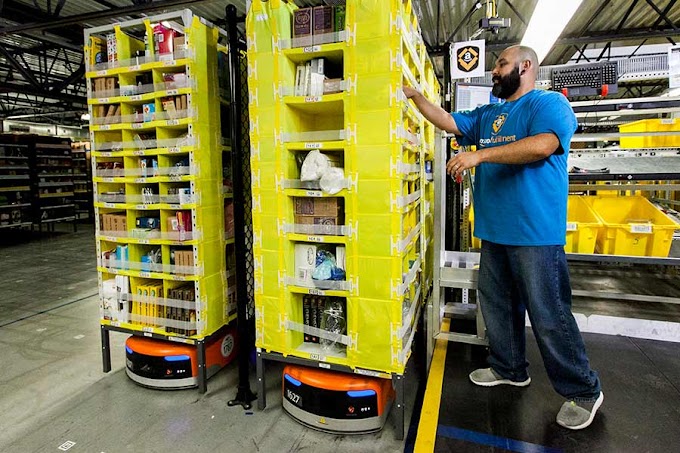Fba In Amazon
E Business
The year-end holiday season is looming on the horizon, and e-commerce brands and sellers should already be focusing on how to prepare for the increase in sales and flurry of warehouse activity. The fourth quarter brings with it a variety of inbound and outbound challenges, testing the limits of your people, platforms, and policies.
Thankfully, it is never too early to start your Q4 planning and reviews to ensure that you mitigate risks and motivate teams to perform well. We will look at four methods for tackling potential issues now, focusing on the warehouse and fulfillment teams that can make or break an e-commerce operation.
Test Systems and Practices
One of the most common Q4 fulfillment problems is having a system or process breakdown when people are in a hurry. An order management solution goes offline, conveyor belts stop working, pickers rush, or packers try to balance too many orders at once. Perhaps your team is allowed to close out an order without double-checking it.
Stress makes people hurry, and that can lead to a wide range of errors. For fulfillment, you face significant customer and company issues if hurrying leads to reduced order accuracy, late shipments, or inventory loss.
Before you get to the year-end rush, bring your team together for testing and training. Review each system to ensure it can handle an increase in demand. Retrain your staff on how they should operate, placing a value on accuracy and patience. Show them precisely how to respond when they get stressed or are falling behind standard metrics.
Most warehouses prioritize speed and accuracy metrics. Before Q4’s shift, have leadership go over these metrics and find ways to balance speed against potential harms if accuracy drops.
Plan for Demand Outstripping Supply
E-commerce sales continue to grow each year, especially when it comes to holiday sales. It can be challenging to project proper demand forecasts and meet increased needs. At the same time, running a lean or just-in-time operation can make it hard to scale up quickly if you face a sudden surge in demand.
To get ahead of these issues, you should start considering how you will respond when demand for a product is greater than your supply. One tactic that companies are beginning to adopt more is e-commerce backorders and cross-docking.
While not ideal, backorders can ensure that your business continues to generate revenue when stock runs low. If you have enough leeway with customers or can guarantee deliveries by a specific date, Q4 backorders can make a lot of sense. This is especially true for niche products.
The best way to ensure that your business is managing backorders appropriately and keeping customers happy is to make the offer on your website as clear as possible. Make it extremely easy to tell what is on backorder from the product page. Explain policies for shipping and set expectations on delivery.
Manage customer expectations so that they know when an item is on backorder, when you expect to ship it, and how the process works. Use your e-commerce or CRM platform to communicate with people regularly, updating them about production and delivery. If you outsource, start addressing storage limits and these capabilities now.
Staying in touch can help to prevent cancellations and avoid negative reviews.
Practice Your Returns
Returns spike during Q4 and right into the start of the new year. In 2020, people returned roughly 1.9 million packages on “National Returns Day,” part of a steady increase. So, the work you do to get your warehouse ready for increased volume needs to have a plan for the increased return, as well.
Plan how you will make this shift, such as identifying areas where you will physically increase or change space to accommodate increased packages as well as inbound management. Run through the process of how you handle returns now. Look for opportunities to scale this up or expand, especially in time-sensitive areas such as checking and restocking these goods.
Increased orders and returns throughout Q4 will make it imperative that you have an efficient process and can maximize your inventory. At the same time, you should retrain people on what is an acceptable return to prevent shipping out defective products and causing customer complaints.
Read:What Is an E-Marketplace,ecommerce marketplace
Refine Customer Service Channels
When an issue comes up in the warehouse, you will hear about it from your customers. Keeping them happy and maintaining on-time, accurate orders is both the most rewarding and most challenging aspect of running your e-commerce fulfillment operations.
So, during the holiday season, the mad rush to get everything else done will lead to issues and a need for improved customer support. Plan now by building out customer service communication channels. Look for methods to increase transparency on your website — not just posting shipping estimates but adding live chat to answer questions.
Train teams on how to handle aspects of customer service. Explain your returns policy and why you have it set a certain way. Provide guidance on what to do when an order is incorrect or there is a delay. Your team will need specific instructions on what they can offer to keep people happy. Test systems not only for how easy they are to use, but if they can handle an increase in volume.
Customer service is at the heart of your operations. Keeping it as a central focus for your preparation efforts in Q4 and beyond can help ensure that your team and business strategy are on the right track for success. Everything depends on your customers, so ensure efforts prioritize making it as easy as possible for them to shop with you.





0 Comments